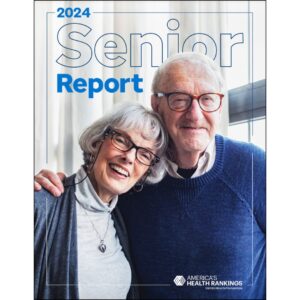Systematic Review Finds Loneliness and Social Isolation Prevalent Among Individuals with Dementia
A systematic review published in March 2025 by Cambridge University Press reveals news information about the prevalence of loneliness among individuals with mild cognitive impairment or dementia. The review evaluated 10 studies and estimated the prevalence of loneliness to be 38.6 percent among individuals with mild cognitive impairment. The prevalence of loneliness was even higher among individuals with dementia, estimated at 42.7 percent. Social isolation was estimated to be 54.3 percent among individuals with mild cognitive impairment.
“The high prevalence of loneliness and social isolation among individuals with dementia or MCI indicates a need for public health strategies aimed at alleviating the disease burden caused by loneliness,” the review’s authors wrote. Additionally, the review highlights proposed ways to tackle loneliness, such as improving social skills, enhancing social support, and finding opportunities for social interactions.
The Importance of Monitoring Loneliness in Residents

Shruthi Raghavendra, Ph.D., senior audio research scientist at Harman International
The review reveals a high prevalence of loneliness, which can have significant implications. “I’d emphasize that loneliness in dementia isn’t just a quality-of-life issue—it accelerates cognitive decline and physical health risks, like depression or falls,” says Shruthi Raghavendra, Ph.D., senior audio research scientist at Harman International. “Investing in monitoring and intervention isn’t optional. It’s a clinical imperative.”
Logan Jamieson, LNHA, MHA, partner, Compliance at Relias, estimates that the percentage of people with dementia experiencing loneliness is likely much higher than reported. “Loneliness and isolation are an epidemic — and it’s even more severe when compounded by a dementia diagnosis,” he says.
Strategies for Tracking Resident Loneliness
Jamieson explains that in his experience working in a senior community, the community didn’t just rely on Minimum Data Set reporting requirements. It implemented an online activity portal allowing the life enrichment team to track resident attendance in real time. As a result, staff members could intervene early on and provide residents with personalized support.

Mark Sanchez, LNHA, MBA, FACHA, chief operating officer, Skilled Nursing & Rehabilitation at United Hebrew
United Hebrew screens all incoming residents, including those in memory care, for mood and mental wellness. Social workers perform the screenings to identify early signs of loneliness, depression, or anxiety, and staff members closely monitor residents’ behavior, sleep, appetite, social engagement, and overall demeanor. “In memory care, where verbal communication may be more limited, non-verbal cues and changes in behavior are especially important,” explains Mark Sanchez, LNHA, MBA, FACHA, chief operating officer, Skilled Nursing & Rehabilitation at United Hebrew. “Staff look for subtle indicators like increased self-isolation, disinterest in activities, and changes in appetite or sleep patterns.”
How to Identify and Monitor Hearing Loss to Facilitate Social Engagement
Hearing loss is a critical factor in social engagement, but it’s often overlooked. Raghavendra encourages senior care communities to train caregivers to note specific signs, like difficulty following group conversations, frequent misinterpretations, and social withdrawal tied to communication frustration. Caregivers should record these signs in residents’ charts with dates and examples, which can establish a pattern.
On-site nursing teams can also conduct basic hearing checks to confirm their suspicions of hearing issues. “This step filters out temporary issues, like earwax buildup, which we can address immediately,” she says.
Communities can then contact the resident’s legal representative, present their observations, and emphasize how hearing impacts quality of life. The community can refer the resident to local audiologists, and should maintain relationships with them. In-facility visits are ideal, when possible, to help reduce memory care residents’ stress.
After an evaluation, the community should ensure that hearing aids are fitted properly and that staff are trained to assist with their use.
“The key is speed and coordination,” says Raghavendra. “Untreated hearing loss compounds dementia-related isolation, so urgent addressing is needed.”
Strategies to Boost Resident Engagement
If residents appear socially isolated, there are many ways communities can help them connect with others. At United Hebrew, staff actively seek opportunities to connect residents with shard interests. “For instance, in our skilled nursing community, we introduced two gentlemen who are both veterans and now they are in each other’s rooms all day long, they eat together and enjoy each other’s company,” says Sanchez. By getting to know each resident personally, staff members can create thoughtful matches that foster meaningful connections between residents.

Logan Jamieson, LNHA, MHA, partner, Compliance at Relias
Jamieson highlights the importance of working to ensure a community’s programming matches residents’ personal interests, like creating a men’s group or culturally-specific activities. “Try actively building individual activities residents can do in their rooms to start bridging the gap between isolation and a desire for stimulation,” he says. “Sometimes, a softer, more personalized approach is the best first step.”
Jamieson also recommends that communities use technology that allows for real-time resident engagement tracking. “There are platforms that help curate personalized activity plans while also providing attendance data, which is critical for spotting early signs of withdrawal,” he says.
To help better monitor resident loneliness and facilitate connections, Sanchez recommends the following steps:
- Start with screening and observation: Incorporate mood and wellness assessments into the intake process and continue them periodically. Train staff to recognize changes in behavior that may signal loneliness or depression.
- Build relationships: Encourage staff to get to know residents beyond surface-level care. Deeper familiarity helps detect when something is “off” emotionally or socially.
- Create a culture of attentiveness: Promote a community atmosphere where everyone — staff, residents, and families — looks out for one another.
- Normalize conversations around mental health: Especially for older adults who may see depression or loneliness as taboo, work gently to overcome stigma. Foster an environment where vulnerability is met with empathy and support.
- Encourage and facilitate connections: Introduce residents to each other based on shared history, interests, or personality traits.
- Offer diverse programming: Engage residents through activities, entertainment, and enrichment programs that encourage movement, conversation, and joy.
- Foster intergenerational connections: Partner with local youth organizations to create intergenerational programming where younger people, like students or volunteers, spend time with residents. These interactions can be mutually beneficial, providing older adults with a sense of purpose and connection, while also allowing the younger generation to learn from their life experiences.
- Create peer support networks: Residents may feel more comfortable sharing their feelings with peers rather than staff members. Consider creating peer-support groups or mentorship opportunities where residents can help one another.
- Involve family and friends: Educating and involving family members in conversation about loneliness can make a huge difference. Encourage families to stay connected in meaningful ways, whether it’s through regular visits, phone calls, or participating in activities together.
Addressing Loneliness and Isolation in Senior Care
With growing awareness of loneliness risks, it’s essential to take proactive steps in senior care settings. “It’s important to acknowledge how COVID-19 exposed the silent danger of loneliness and isolation in senior care,” says Jamieson. “Residents today often have higher acuity levels, and systems need to empower staff to identify and support those who might otherwise fall through the cracks. Especially for residents who can’t advocate for themselves, a personalized and adaptive engagement strategy is the new standard.”

Paige Cerulli is a contributing writer to i Advance Senior Care.
Related Articles
Topics: Alzheimer's/Dementia , Facility management , Featured Articles , Operations , Risk Management











